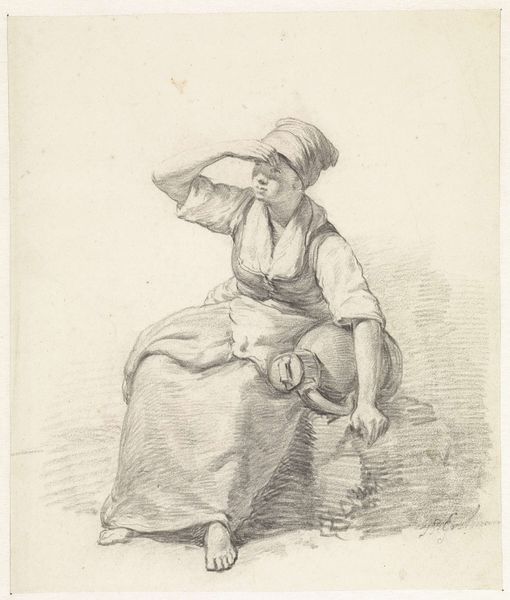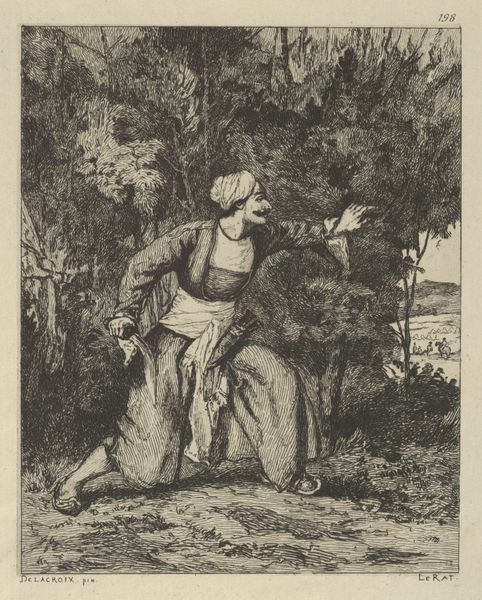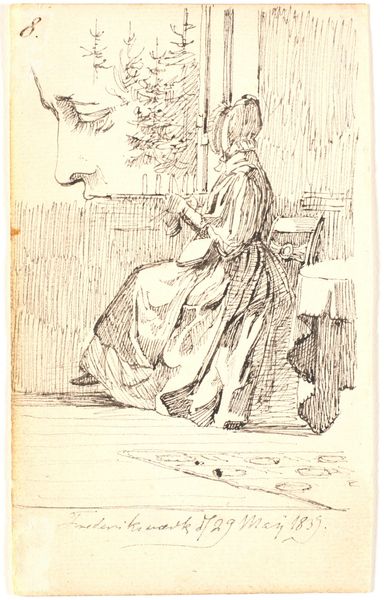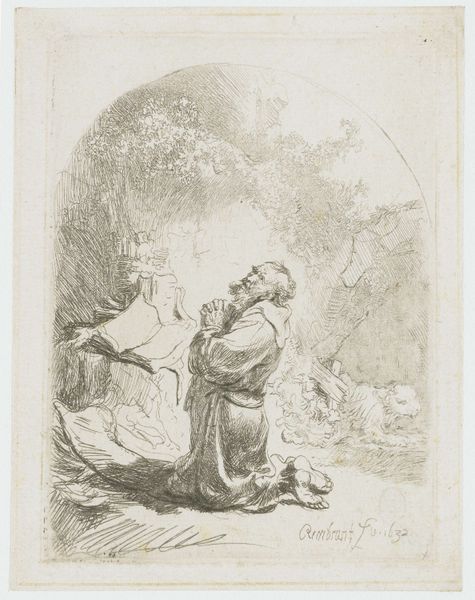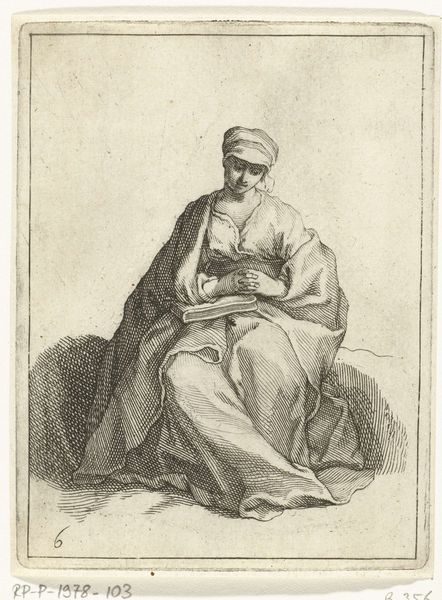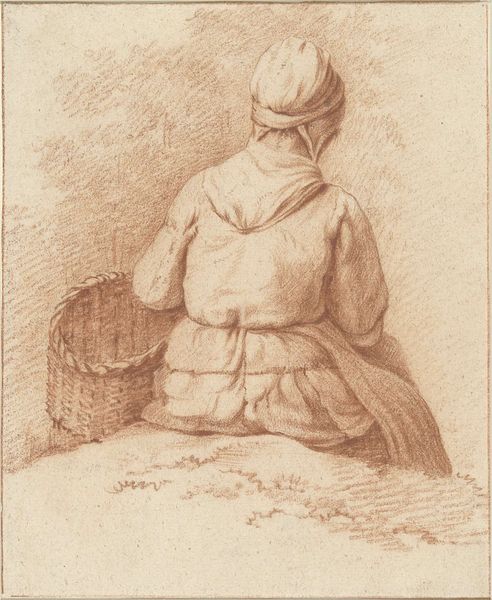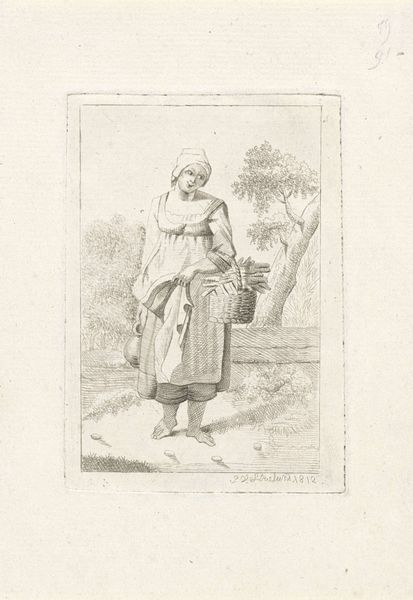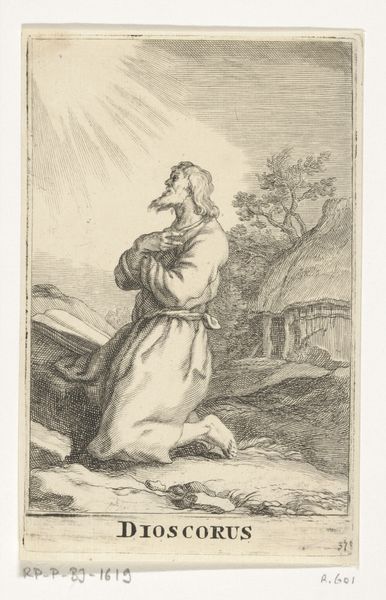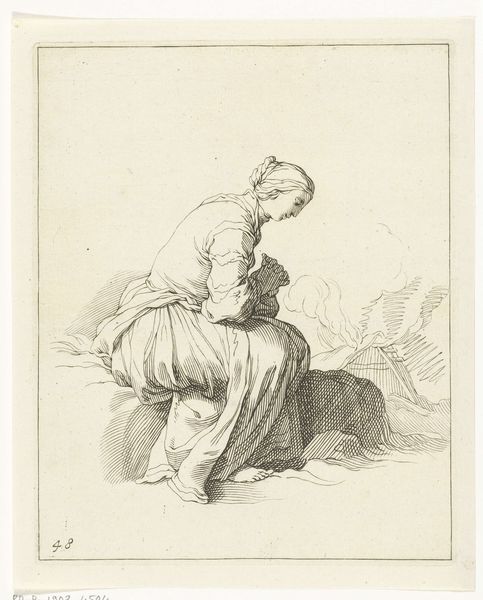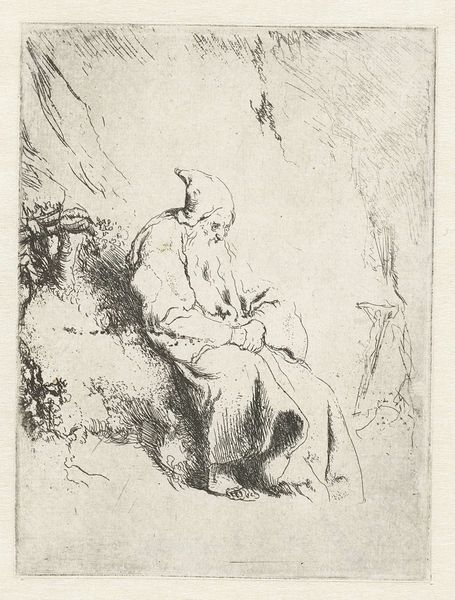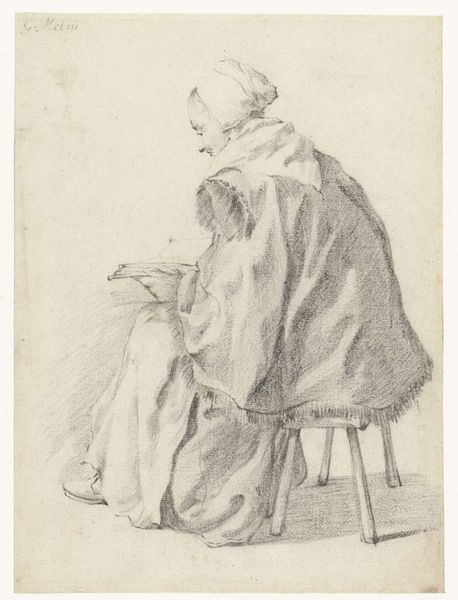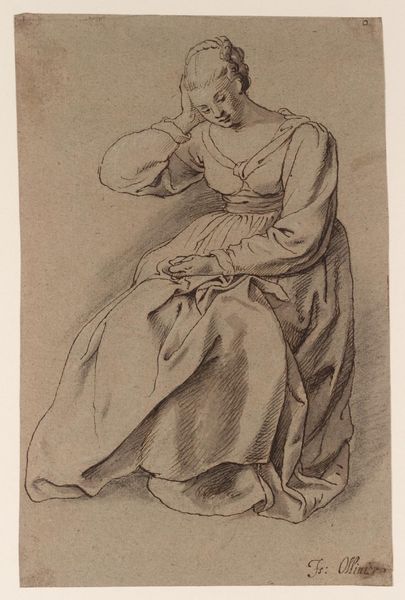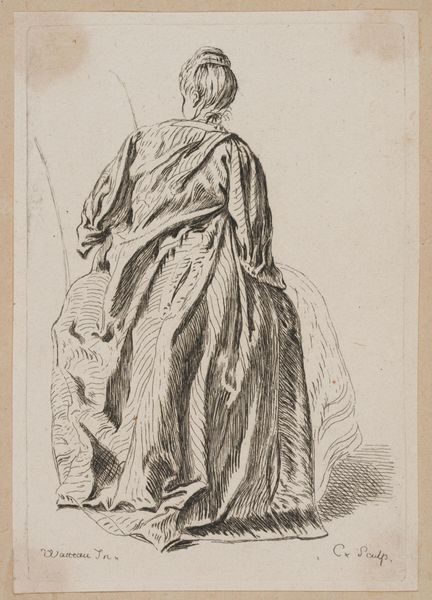
drawing, print, paper, pencil, engraving
#
portrait
#
pencil drawn
#
drawing
# print
#
landscape
#
figuration
#
paper
#
pencil drawing
#
romanticism
#
pencil
#
engraving
Dimensions: height 130 mm, width 96 mm
Copyright: Rijks Museum: Open Domain
Editor: Here we have "Zittende Vrouw" by Cornelis Steffelaar, created sometime between 1807 and 1861. It's a print made with pencil and engraving on paper. I find the figure very peaceful; she seems lost in thought, looking off into the landscape. What draws your attention when you look at this piece? Curator: Well, I immediately consider the materials. The combined use of pencil and engraving is quite interesting. Engraving was a labor-intensive process, requiring specialized skills and tools, traditionally aligned with mass production for a market, whereas pencil drawings were used for preliminary studies, quick sketches. How do these two approaches work together, here? Editor: That's a great point! So, instead of pure artistic inspiration, there was a specific, almost industrial, approach to it. Is it also related to how prints circulated and were consumed during that period? Curator: Precisely! Consider the economics of art production at this time. Steffelaar would have needed the resources – workshop space, assistants, access to distribution networks – to create and disseminate this print. Think about the social class of those who might acquire and collect a print. Where might it hang? In a frame? A scrapbook? What does that context say? Editor: I didn’t think about it this way. So it’s not just a peaceful landscape but part of a larger system of production and consumption. It recontextualizes the romantic landscape; what can we observe about this contradiction? Curator: It shifts our understanding. What feels like personal reflection in this piece, of landscape in this era, is tied to social and economic conditions surrounding the materials and their means of production, thus adding another complex layer to the art. Editor: That definitely gives me a different perspective on what’s happening in this artwork. Thank you.
Comments
No comments
Be the first to comment and join the conversation on the ultimate creative platform.
